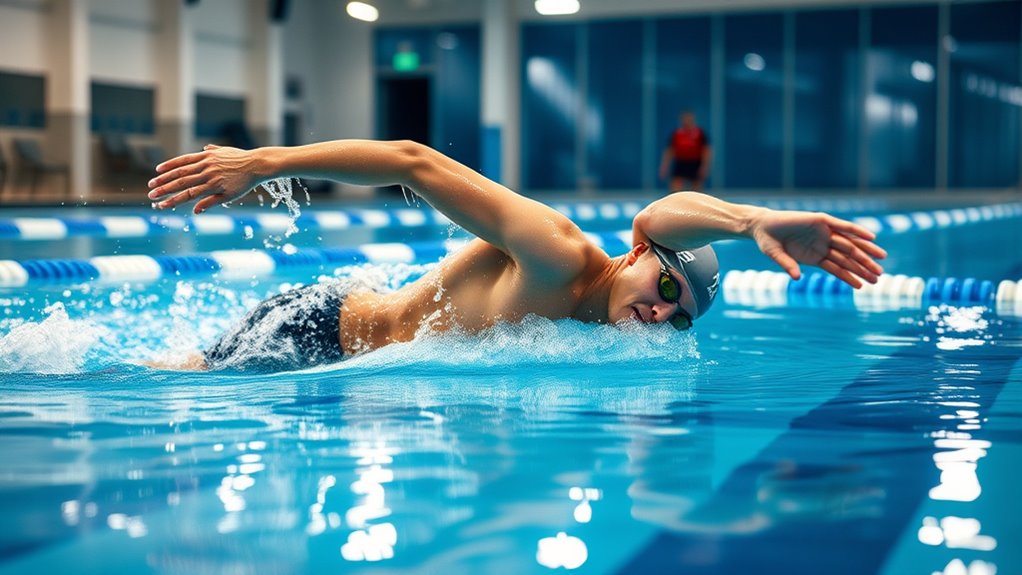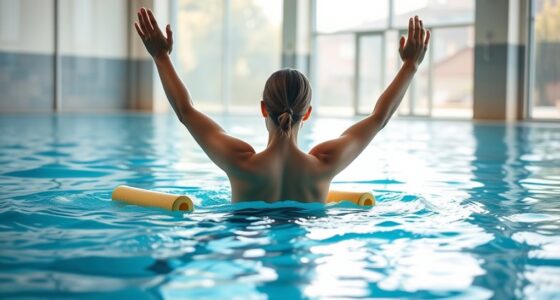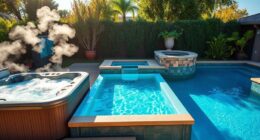Stroke efficiency drills are simple exercises that help you swim better by focusing on your breathing, kicking, and body position. These drills aim to make your water movement smoother, reduce drag, and conserve energy. By practicing activities like rhythmic breathing and controlled kicks, you’ll build better muscle memory and stamina. If you keep practicing, you’ll notice improved technique and faster, more relaxed swims—more details can guide you toward even better results.
Key Takeaways
- Stroke efficiency drills are exercises that improve water movement, breathing, and kicking to make swimming smoother and more energy-efficient.
- They involve techniques like rhythmic breathing, steady kicking, and single-arm strokes to build better muscle memory.
- Regular practice helps reduce drag, conserve energy, and enhance overall swimming performance.
- Incorporating these drills into your routine improves breathing, stamina, and stroke coordination.
- Tips include maintaining body alignment, controlling breathing, and using resistance tools for maximum benefit.
What Are Stroke Efficiency Drills and Why Do They Matter?
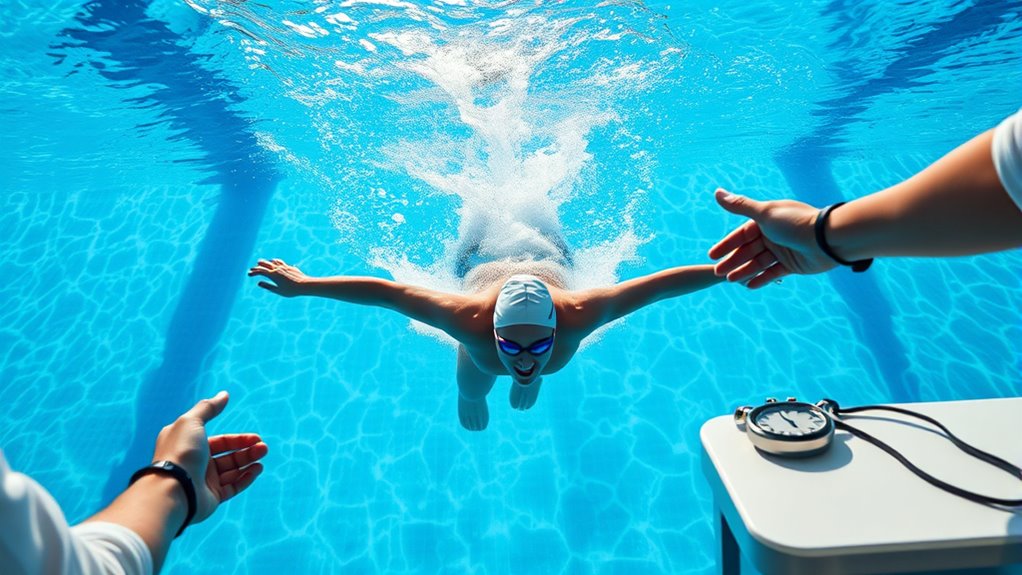
Stroke efficiency drills are specialized exercises designed to improve how effectively you move through the water. These drills help you refine essential skills like breathing patterns and kick techniques, which are vital for maintaining a smooth, powerful stroke. By focusing on proper breathing, you guarantee oxygen intake is efficient without disrupting your rhythm, while improved kick techniques boost propulsion and stability. These drills target specific areas to help you become more streamlined, reducing drag and conserving energy during races or workouts. When you practice these drills regularly, you develop better coordination and muscle memory, making your overall swim smoother and more efficient. Additionally, they can help identify and address inefficiencies in your technique, leading to overall improvements. Ultimately, stroke efficiency drills are key to maximizing your performance and enjoyment in the water.
Common Types of Stroke Efficiency Drills Explained
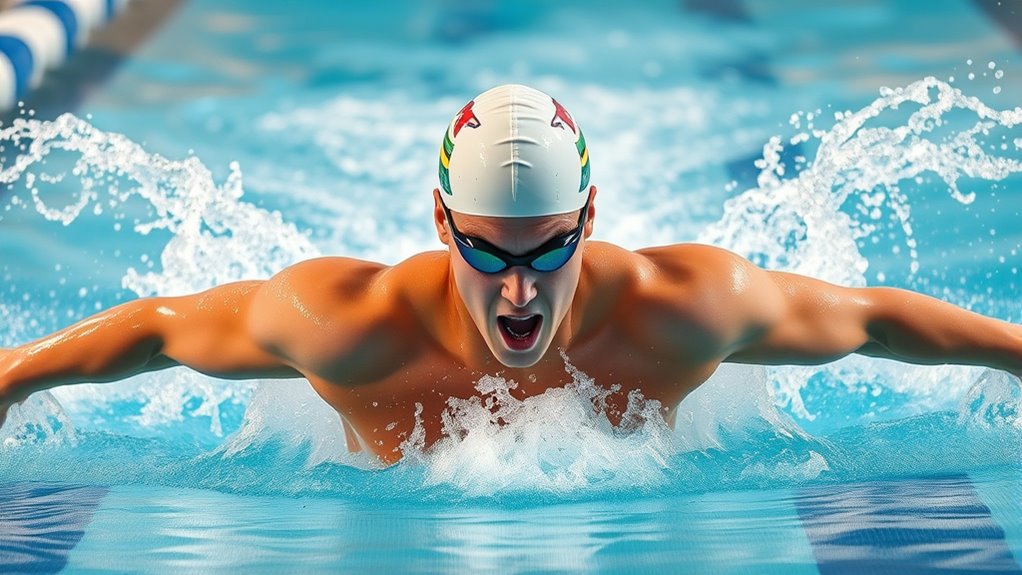
To improve your efficiency in the water, incorporating specific drills can make a significant difference. One common drill focuses on breathing techniques, helping you sync your breath with your stroke to reduce drag and maintain rhythm. This might involve rhythmic breathing drills where you breathe every three or five strokes, improving your oxygen intake and streamlining. Another essential drill emphasizes kick patterns, which strengthen your legs and promote consistent propulsion. By practicing drills like flutter kick or dolphin kick with a focus on maintaining a steady rhythm, you enhance your overall stroke efficiency. These drills help you develop better control over your breathing and kick timing, leading to smoother, more effective swimming with less wasted effort. Understanding modern toilet features can also inspire you to optimize your training environment for efficiency and comfort.
How to Incorporate Stroke Efficiency Drills Into Your Swim Routine
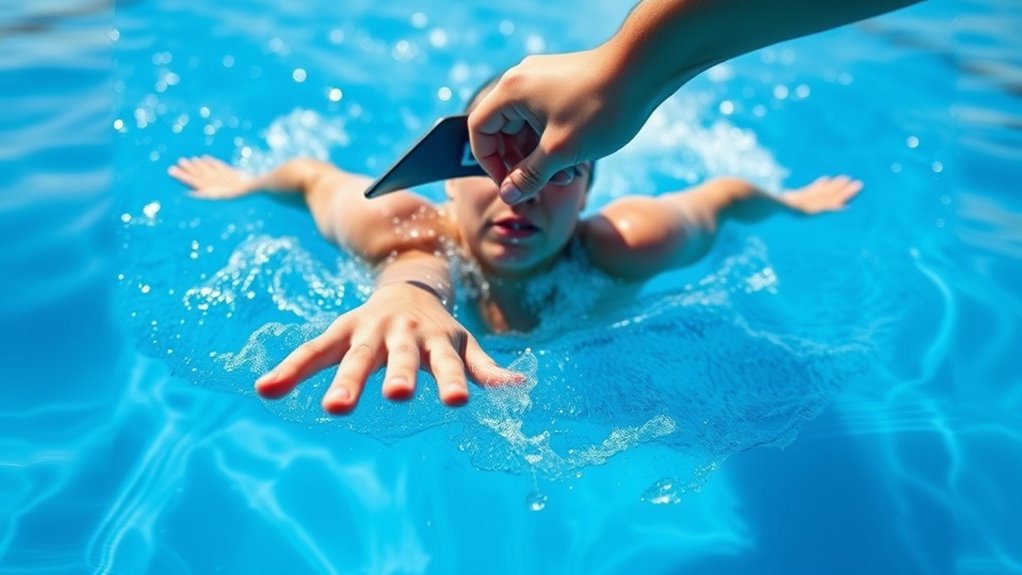
Incorporating stroke efficiency drills into your swim routine requires planning and consistency. To maximize their benefits, start by scheduling dedicated sessions a few times a week. Focus on refining breathing techniques to promote steady, relaxed breaths that improve oxygen flow and reduce fatigue. Pay attention to kick adjustments, ensuring your kicks are controlled and efficient, not wasted energy. Incorporate drills that emphasize body position, streamline flow, and minimal resistance. Consider adding drills like single-arm strokes or fingertip drag to build muscle memory. Keep your sessions focused and purposeful, gradually increasing intensity. Consistent practice helps ingrain efficient habits that translate into faster, smoother swimming. Remember, small, deliberate improvements compound over time. Additionally, understanding juice cleansing principles can support your recovery and overall energy levels, enhancing your training results.
Benefits of Practicing Stroke Efficiency Drills Regularly
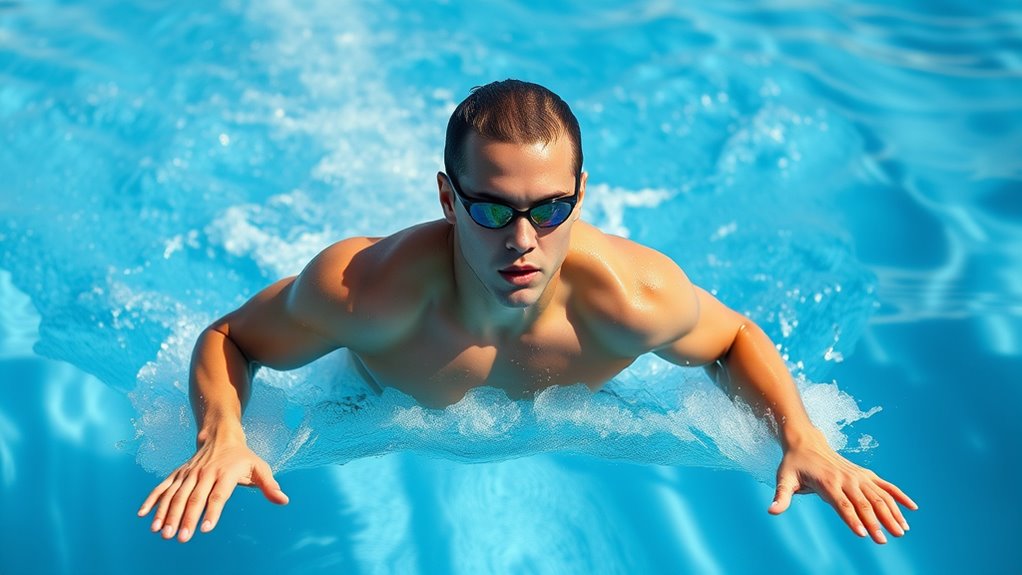
Practicing stroke efficiency drills regularly leads to noticeable improvements in your overall swimming performance. These drills help you develop better breathing techniques, making it easier to stay relaxed and maintain a steady rhythm. They also sharpen your mental focus, ensuring you stay attentive to your form and technique during workouts. Over time, you’ll notice increased stamina and smoother strokes, reducing fatigue and conserving energy. Consistent practice builds muscle memory, making efficient movements automatic. Incorporating glamping principles of comfort and sustainability can also motivate you to keep up with your training routines. Use this table to understand key benefits:
| Benefit | Impact |
|---|---|
| Better breathing | More oxygen, less fatigue |
| Increased focus | Improved technique, fewer mistakes |
| Energy efficiency | Longer, stronger swims with less effort |
Tips for Getting the Most Out of Your Efficiency Drills
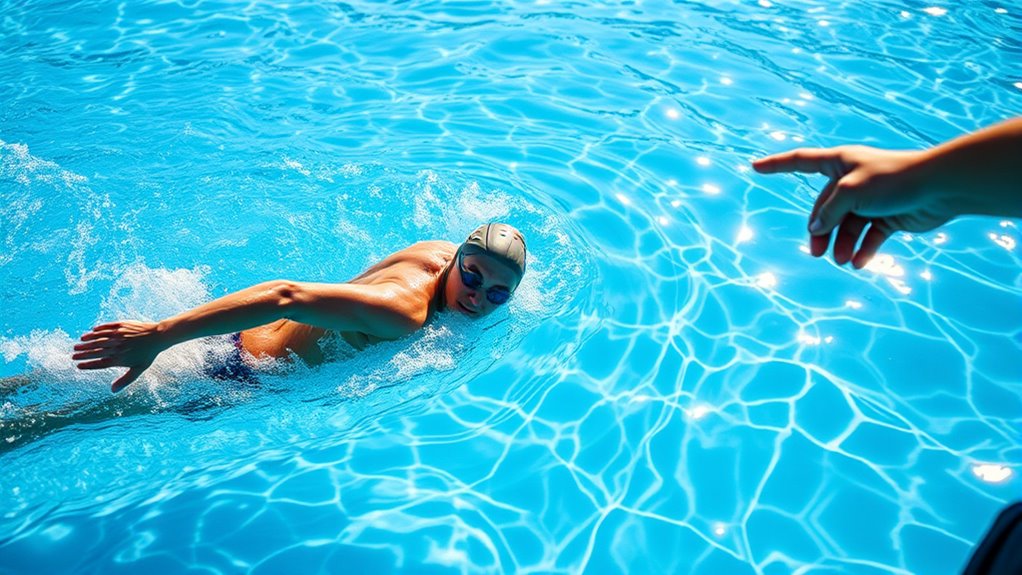
Maximizing the benefits of your efficiency drills requires intentional focus and strategic planning. To get the most out of these practices, pay close attention to your breathing techniques and body position. Proper breathing keeps you relaxed and maintains a steady rhythm, enhancing your stroke efficiency. Maintaining ideal body position reduces drag and conserves energy, allowing you to swim longer and faster. Additionally, incorporating power training tools such as resistance drills or specialized equipment can further improve your overall efficiency. Here are some tips:
- Focus on controlled, steady breathing to avoid fatigue.
- Keep your body aligned and streamlined in the water.
- Use drills that emphasize body position awareness.
- Incorporate breathing exercises to improve lung capacity and relaxation.
Frequently Asked Questions
How Do I Know if My Stroke Efficiency Has Improved?
You’ll notice your stroke efficiency improves when your breathing rhythm feels smoother, allowing you to swim longer without fatigue. Pay attention to your body position; if it stays streamlined and stable, you’re likely conserving energy better. You might also see faster times or reduced effort during drills. As your breathing becomes more controlled and your body stays aligned, these signs indicate your stroke is becoming more efficient.
Can Stroke Efficiency Drills Help With Injury Prevention?
Yes, stroke efficiency drills can help prevent injuries by reducing your injury risk and muscle strain. When you focus on proper technique, these drills strengthen your muscles and improve coordination, making your swimming more efficient and less taxing. By practicing good form regularly, you decrease the chances of overuse injuries and muscle strain, ensuring you stay healthier and able to swim longer without discomfort.
What Equipment Is Necessary for Effective Drills?
Did you know swimmers who use proper equipment improve their efficiency by up to 15%? For effective drills, you’ll need basic swim gear like fins, kickboards, and pull buoys. Training aids help refine technique and build strength. These tools are essential for focused practice, allowing you to target specific muscles and improve stroke mechanics. Investing in quality swim gear makes your drills more effective and enjoyable, ultimately boosting your swimming performance.
How Often Should I Practice Stroke Efficiency Drills?
You should aim to practice stroke efficiency drills at least three to four times a week to see steady progress. Maintaining consistent practice, or practice consistency, helps you develop muscle memory and improve technique faster. Adjust the drill frequency based on your goals and schedule, but staying regular is key. Short, focused sessions are more effective than infrequent, lengthy ones, so make these drills a regular part of your swim routine.
Are There Specific Drills for Different Swimming Strokes?
Did you know that swimmers improve efficiency 25% faster with stroke-specific exercises? Yes, there are specific drills for each stroke, like flutter kick drills for freestyle or dolphin kicks for butterfly. Incorporate drill variations tailored to your strokes to target weaknesses and build strength. These stroke-specific exercises help refine technique, boost speed, and make your training more effective. Focus on these targeted drills to elevate your overall swimming performance.
Conclusion
By regularly practicing stroke efficiency drills, you’re not just swimming faster—you’re opening your full potential. Think of these drills as the secret keys to smoother, more powerful strokes that turn every lap into a masterpiece. So, plunge in, stay consistent, and watch your technique transform. Remember, every stroke is a step closer to mastery—don’t let the currents of doubt hold you back. Your best swim is just a drill away.
